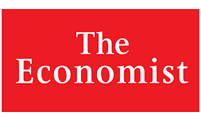Report: The Future of Healthcare
Sector: Healthcare
Publication Date: 2020
Kris Sterkens, Company Group Chairman EMEA at Janssen
Kris Sterkens says the healthcare system needs to transition from treating disease to preventing illness and could well adopt a Netflix model whereby payers take out a subscription and spread their payments for costly therapies over a number of years.
Could you please start by introducing the evolution of Janssen into a transformational innovator in life sciences?
About a decade ago, Janssen repositioned itself to be a transformational medical innovator and resolved to concentrate upon a handful of areas of particularly high unmet need: namely oncology, immunology, cardiovascular-metabolic, infectious disease and neuroscience. More recently, we have also added pulmonary hypertension to the mix by virtue of our landmark acquisition of Actelion.
All of this marks an important strategic shift away from trying to be everything to everyone and maintaining a skin deep, often opportunistic presence across a very broad spectrum of therapeutic areas. Though the business strategies of many of the major originator drug developers have subsequently followed suit, Janssen can be credited with being one of the first pharmaceutical firms to understand the need to double down upon our core strengths whereby we could wield maximal impact and really make a difference to the lives of patients. Given the increasing complexity and sophistication of medical science, with the general tilt towards biologics as opposed to chemically synthesised drugs, it has become ever more necessary to specialise.
Crucially we also complemented this sense of streamlined strategic focus with a philosophy of open innovation, establishing dedicated innovation centres and what we call “J-Labs” across the world. We wanted to send a clear message of being willing to embrace innovation regardless of where it comes from and to use the entire globe as our laboratory.
How does this filter down to your current priorities for EMEA? And which exciting new therapies are you presently rolling out across the European marketplace?
Janssen has managed to assemble quite a strong pipeline of latest-generation, breakthrough medicines. My priorities are naturally about getting these therapies to the patients that need them as swiftly as possible. That means navigating the respective regulatory landscapes and financial structures of the different markets under my supervision. We’re already making huge strides forward particularly in oncology and haematology, which will be a major driver for our 2020 business. I’m also personally excited that we will be launching a new treatment for depression, the first in many decades. This is significant when you consider the terrible impact this disorder has been having on society.
Another hallmark of the Johnson & Johnson / Janssen approach has been to champion a reorientation of care paradigms to emphasise prevention. What progress have you been making on that front?
That is absolutely correct. Our vision is to transition away from merely “treating” disease more towards “intercepting” and “pre-empting” illness. As we gain more expertise and understanding around the therapeutic areas in which we are operational, Janssen has been managing to move the needle back from late stage disease to earlier phases of the illness.
If you take prostate cancer as an example, we started out by treating patients exhibiting advanced-stage disease who only had a few more months to live. However, with the extra understanding of the disease mechanism that we now possess and the latest technological tools at our disposal, we are finding that we can scroll backwards through the disease cycle and intercept the cancer before the symptoms of metastasis actually manifest themselves. This dramatically increases the survival rate and results in a considerably more sustainable healthcare paradigm.
HIV is another example where we were an early entrant and, over time, proved able to transform the condition from a death sentence to a chronic disease that is manageable to the point where people can basically live a more or less normal life. The fact that we can call on the medtech expertise of our parent company, Johnson & Johnson, is an asset in this endeavour, especially when it comes to companion diagnostics and being able to swiftly identify a disease, right at the outset.
So the convergence of medtech and pharma, as well as advancements in diagnostics can be considered handmaidens to the new world of preventative medicine?
Latest generation technologies are certainly opening up entirely new possibilities for pre-emptive medicine, but equally a switch over in mind-set also needs to take place. There is something of a sense of ‘back to the future’ as we revive old concepts that have been overlooked for far too long. In 16th Century China, physicians would be remunerated according to the number of people that they kept healthy rather than the number of illnesses treated, and I believe that is very much the mentality that we need to adopt today. Society needs to be willing to invest more in prevention so that we can transition from the ‘sick care’ system that we experience today to a ‘health care’ system focused on wellness. There is still a long way to go. The incentive structures in many hospitals are not always well aligned. Many still function on a fee-for-service based model with performance measured by the numbers of patients receiving treatments. That goes against the principle of value-based healthcare and ends in perverse outcomes by making it worthwhile to dish out as many treatments as possible rather than catching disease quickly and privileging therapies that are minimally invasive. The time has come to consider the bigger picture and be smarter and more rational in how we go about delivering care.
How does personalised precision medicine come into the mix?
Personalised medicine is most definitely the direction in which healthcare is traveling, and you already see this manifested in the cell and gene therapies. New technologies such as biomarkers are opening the door to an ultra-customised market where each patient is able to receive an individualised, tailored therapy that aligns with his or her genetic makeup and phenotype. This has suddenly become possible because of new combinations of medical science and data science.
Technological advancements such as artificial intelligence are enabling big data to be processed in a manner that delivers unique insights that were previously inaccessible. We are therefore entering a very exciting period where the formerly unthinkable has, all of a sudden, become possible. The ramifications of all of this are profound because it raises the prospect of much more precise treatment pathways that avoid many of the ‘trial and error’ style inefficiencies and missteps that we are all accustomed to.
Can ultra-customised therapies really even be affordable enough to be rolled out at scale? And is the current pharma pricing model becoming obsolete?
People often claim that the pharma business model is broken, but I would contest that and point out that the fundamentals remain valid and sound. Whatever a company introduces as a new therapy clearly needs to be better than the existing gold standard. Firstly, it needs to manifestly improve the patient experience by delivering superior clinical outcomes or, at the very least, a more patient-friendly approach. Secondly, it needs to provide a clear benefit for the healthcare system as a whole in terms of financial sustainability. If both of these conditions are met, then there clearly has to be reward for innovation, which is guaranteed by the intellectual property system. In this way drug developers can both recover the costs of development and generate a reasonable profit. All of this is very sensible.
There is a need to rethink pricing models to accommodate new styles of therapy in instances when the upfront sticker shock is very high. This sentiment was summed up well by Janet Woodcock, Head of the Centre for Drug Evaluation and Research in the US, at a conference earlier this year, when she said “the science is fabulous, but that’s not enough”. The outwardly exorbitant price tag around many CAR-T therapies might well be justified by the benefit that they bring to the healthcare system. In many cases, we’re talking about curative therapies that will generate substantial cost savings over the long run compared to existing care pathways. These are one-shot treatments whose benefit lasts many years; however, the current pricing systems in many markets are simply not set up to handle this style of novel treatment. There thus needs to be a degree of reform of the pricing methodology to align with how healthcare is evolving.
This could potentially mean reverting to a Netflix model where payers would take out a subscription and spread their payments given that the benefit of the medicine extends over multiple years. The onus is on all stakeholders – industry, healthcare providers and payers alike – to band together and collaborate in defining a viable new structure that is fair, fit-for-purpose and works for all.
What about pay-per-performance and risk sharing models?
I am convinced that outcomes-based contractual arrangements will be the way forward, and Janssen has indeed been pioneering the application of risk-sharing models in markets like the UK such as for our therapies for multiple myeloma. In my experience, payers haven’t tended to be so fond of such mechanisms because they entail an element of complexity that goes well beyond simple discounting. Many health systems traditionally haven’t had the requisite infrastructure in place to be able to process the data and monitor end outcomes so to be able to implement and enforce such arrangements. The digital revolution and machine learning are, however, increasingly redefining what is possible.
Why do you think life science industry has been so slow to properly embrace the digital revolution?
Other industries such as entertainment, travel and media have all been thoroughly disrupted, but Pharma has, indeed, been sluggish to embrace the inevitable. This is historically down to a number of reasons. Firstly, we are working in a highly regulated industry where there is considerable risk adversity and conservatism around enacting changes that may adversely impact human lives. Secondly, the data that does exist tends to be fragmented and locked in silos. Thirdly, privacy issues are especially acute when one thinks about the sensitivity of personal medical records. Finally, let’s not forget about the legacy of face-to-face interactions with medical practitioners and how direct relations through medical representatives have been considered fundamental to our industry.
That said, little by little, we have been witnessing the erosion of each and every one of these barriers. Technology companies are increasingly entering the fray and translating big data into useful insights and reported outcomes that are redrawing how we deploy medical science. After the initial high barriers to entry the floodgates are beginning to open and traditional life science players perceive this as both a threat and an opportunity. My personal opinion is that the future is highly promising, but not promised.
Do you perceive tech giants like Google, Facebook and Amazon to be potential competitors or partners?
The software and tech giants bring to the table completely new capabilities such as access to and ownership of data combined with the interpretation and translation of that data into insights. Drug developers like Janssen, meanwhile, deliver the understanding and knowledge of the progress of science which is something that is exceedingly hard for an outsider to master. These technology companies sit on the vast mountains of data and have advanced analytics and AI to drive insights, but we, the pharmaceuticals developers, remain the most able to apply their insights to the science. Each side can clearly benefit from the other.
How then is the life sciences industry going about integrating digital technologies?
The impact of digitalisation on our business models is all encompassing. Algorithms, block-chain and deep learning can clearly revolutionise R&D by rendering the drug discovery and development process more efficient, less costly and condensing time frames. In the healthcare domain, meanwhile, different sources of data are getting interconnected for the first time enabling us to derive unique insights on patients and recalibrate treatment pathways accordingly to produce vastly better healthcare outcomes.
Also technologies like artificial intelligence produce a qualitative evolution because they can lighten the load of healthcare professionals who have become overburdened with data and administration, freeing them up time-wise to focus more on the patient. I would call it empathetic technology. You bolster the human factor by automating the elements where it doesn’t make sense for the clinician to be spending his or her time. Far from replacing the healthcare professional it unleashes and unshackles him. It augments the human factor.
Even at the more commercial end of our go-to-market model, the manner in which pharma companies engage with physicians is also being overhauled. Predictive analytics are being deployed to guide us in how to best collaborate with the practitioner community whether that constitute face-to-face contacts, social media, mailings or congresses. Medical representatives are thus able to fine-tune their interactions with physicians to maximal effect. It no longer suffices to just possess a digital strategy. Digitalisation isn’t the standalone pillar people once conceived it to be. Instead it pervades all activities to the extent that every strategic aspect of the business nowadays needs to be equipped to function in an increasingly digitalized world.

 Related Content
Related Content
Taxing Times: Why the OECD Didn’t Get it Right
Zac Lucas talks about the Common Reporting Standards, the OECD’s blacklist and the need to bring immigration consultants into the regulatory fold.
Investment Migration: The New Normal
With 30 years of experience in financial services and as a former private banker, Juerg Steffen knows what effect regulation can have on the dynamics of a sector.
Revolutionising Payments
Businesses and consumers are standing on the brink of a payment revolution. Interest in the adoption of new technologies is quickly moving into the mainstream. Contactless is the latest buzzword of the payments industry, as it opens up exciting new opportunities for innovation.
A Qualified Difference
The Investment Migration Council has established a global education and training division to facilitate and build courses that offer qualifications and training for those working in the ever-growing investment migration industry.
Report Sponsors




























